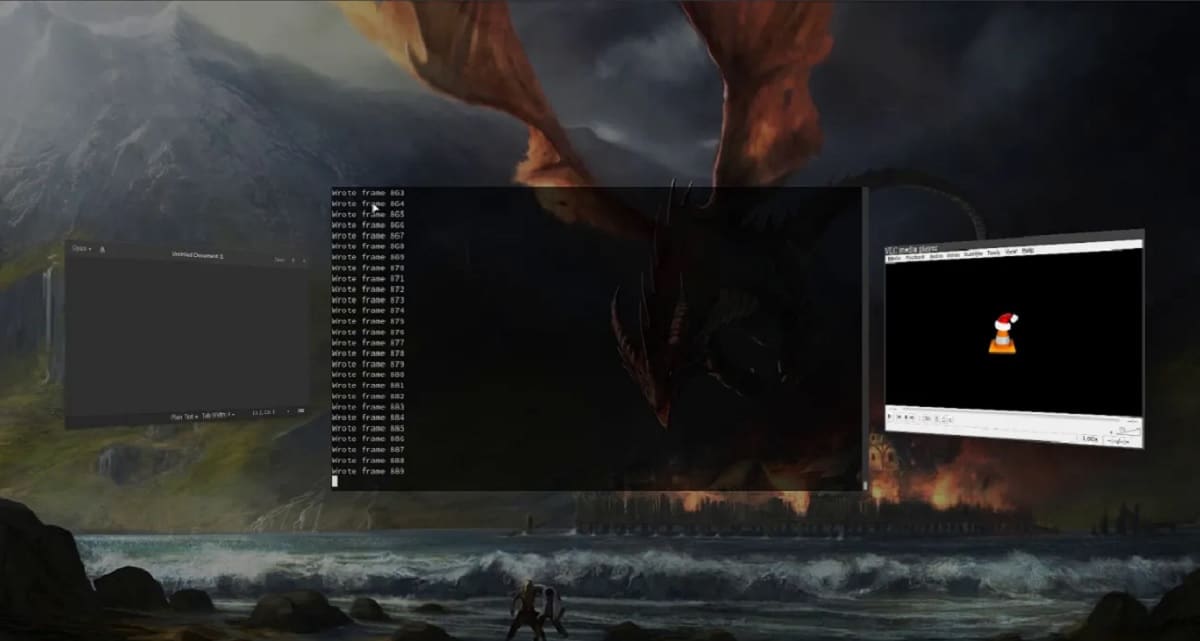
Recientemente it became known the news of launch of the new version of the composite server "Wayfire 0.4", which uses Wayland and allows you to create resource-friendly user interfaces with 3D effects in the style of the 3D plugins for Compiz, such as switching screens through a 3D cube, spatial design of windows, transformation when working with windows, etc. .
For those who are unaware of Wayfire, you should know that this is a composer of Wayland which is developed as a totally independent project. East is inspired by Compiz and its main objective is to be able to offer resources with 3D effects and for this it uses wlroots.
For those of you unfamiliar with Wayland, a Wayland composer is similar to window managers in the X11 world. Basically this software is responsible for coordinating all input and output devices and manages all open applications.
The interesting thing about Wayfire, is that supports extension through plugins and provides a flexible customization system.
The project code is written in C ++ and distributed under the MIT license. The foundation is the wlroots library, developed by the developers of the Sway user environment and which provides basic functions to organize the work of a Wayland-based composite administrator. As a panel, you can use wf-shell or LavaLauncher.
What's new in Wayfire 0.4?
In this new issue of the composer, it has been added support to decorate buttons close, minimize and maximize windows for applications using X11 (via Xwayland) and Wayland. For these buttons, they can determine the order of their arrangement, size, colors, font, etc.
Another important change is that the ability to create animated effects for context menus and tooltips.
It is also mentioned that handling of dialog boxes has been improved, such as file selection. For example, a setting has been added that determines whether dialog boxes are attached to main windows (as in GNOME) or independent "floating" rendering.
A set of scripts to simplify installation on typical distributions like Fedora, Ubuntu, Arch, and Debian.
Wf-config library rewritten responsible for analyzing the configuration file. The configuration format remained unchanged, but it was possible to verify valid value types and ranges. As before, a dynamic configuration change is supported (changes to the configuration file are named on the fly and do not require a reboot).
Finally it is mentioned that the continuous development of WCM continues, a graphical interface to configure Wayfire without editing the configuration file and performance optimization of transition effects and transforms is carried out.
Of the other changes that are mentioned:
- The Expo plugin now supports different key combinations to go directly to a specific workspace instead of using the mouse
- window-rules Plugin now supports set alpha command to automatically set applications transparency as soon as they start
- Performance optimizations for blur and other transformers.
- Mouse cursor is now drawn when mirroring outputs.
- There is an [idle] option to disable DPMS when a full screen window is active.
- Bug/Crash fixes
How to install Wayfire?
For those who are interested in being able to install this composer, they can do so by following the instructions that we share below.
The easiest way to install Wayfire is using your install script that can be used in a general way in Linux.
For this we are going to open a terminal in the system and type in it:
git clone https://github.com/WayfireWM/wf-install cd wf-install ./install.sh --prefix /opt/wayfire --stream 0.4.0
Alternatively for those who are Arch Linux, Manjaro, Arco Linux users or any other derivative from Arch Linux. Installation can be done directly from Arch repos:
sudo pacman -S wayfire
In the case of Fedora can also be installed from its repositories with:
sudo dnf install wayfire
If you want to know more about it you can consult the following link.